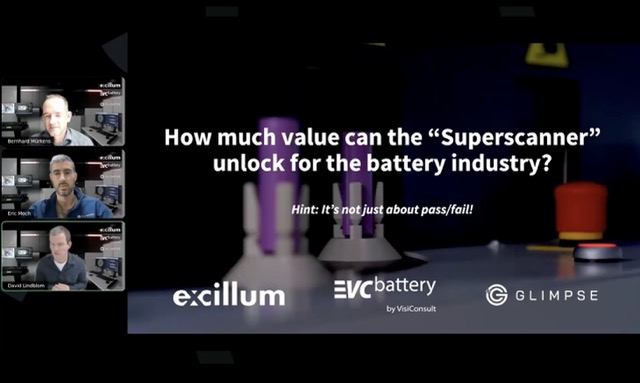A brief guide to making X-rays for CT scanning
One of the most important components of an X-ray computed tomography (CT) system is the X-ray source, which plays a crucial role in determining both the speed and image quality of CT scans. In this post, we'll discuss the science of X-ray generation and compare three different X-ray source designs: static target sources, rotating target sources, and liquid-metal-jet target sources.
X-ray generation
The video below provides an overview of the X-ray generation process:
Just like a battery, an X-ray source has a cathode and an anode. During operation, the “target” component of the anode assembly is bombarded with electrons. Typically, 99% of the electron energy converts into heat, and only 1% of the energy will convert into X-rays. As a result, adequate thermal management is required to avoid damaging (i.e., melting) the target material. Thus, the primary challenge in X-ray source design is thermal management of the target. New, innovative X-ray sources attempt to solve this heat transfer problem.
Target designs
Static targets
Static targets are the most common type of X-ray source. They consist of a fixed anode material, typically tungsten, which is struck by high-energy electrons to produce X-rays. The simplicity of this design makes static targets relatively easy to manufacture and maintain. However, static targets have poor heat dissipation. The concentrated heat generated during electron bombardment can damage the anode, which limits the power and intensity of the X-rays produced.
Rotating targets

Rotating targets improve upon the static design by mounting the anode on a rotating disc. This disk spins during operation, which distributes the heat over a larger surface area and significantly enhances heat dissipation. As a result, rotating targets can operate at higher power than their static counterparts.
Today, Nikon is the primary provider of CT systems powered by rotating targets. In fact, Glimpse’s current scanner is a Nikon system with a rotating anode target.
Liquid-metal-jet targets

Liquid-metal-jet targets represent the cutting edge of X-ray source technology. In these systems, a jet of liquid metal (often a eutectic alloy of gallium, indium, and/or tin) is used as the target. The liquid nature of the target allows for continuous renewal of the anode material, providing superior heat dissipation and allowing for extremely high power levels. This design results in X-rays that are both highly intense and consistent.
The liquid-metal-jet design has been pioneered by Excillum. Check out the below video for an illustration of the benefits of the liquid-metal-jet approach:
Conclusion
Choosing the “right” X-ray source depends largely on your specific application needs. For low-volume applications (~10s of cells/day), a static source may suit your needs. Moderate-volume applications (low 100s of cells/day) can be well served by a rotating anode source. Finally, a liquid-metal-jet source is required for high-volume applications (>1000 cells/day).
Even with 10s of cells per day, however, managing and visualizing your CT data will quickly become unmanageable (since each scan can be dozens of GB). This is where Glimpse comes in; Glimpse’s X-ray-powered battery quality monitoring platform allows both cell makers and cell buyers to quickly extract key information from their scans at scale. Check out our free 1000-cell demo to see how our platform unlocks critical insights into battery quality.
Glimpse’s mission is to enable battery quality at scale by offering CT-powered solutions to your battery quality control needs. Please reach out if you’re interested in Glimpse’s “Scan on Demand” or “On-Premise Scanning” offerings; we’ll be happy to help you select an appropriate scanner for your needs!
Further reading
- https://en.wikipedia.org/wiki/X-ray_tube
- https://www.excillum.com/history-of-x-rays-early-years/
- https://www.excillum.com/history-of-x-rays-x-ray-tubes/
All images created by Excillum.




